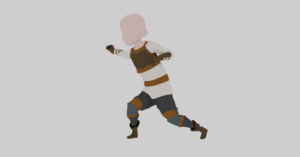Rewards or loot mechanics are a popular feature in many games, including RPGs, action games, and even mobile games. The ability to collect and acquire various items adds a layer of excitement and engagement to the gameplay experience. In this post, we will explore loot mechanics in games and how to implement them in Unity.
What are loot mechanics?
Loot mechanics refer to the game design elements that allow players to acquire items and rewards through gameplay. These items can range from weapons, armor, potions, and even money. Loot mechanics can be designed in many different ways, but they usually involve defeating enemies, completing quests, or exploring the game world.
Why should I implement loot mechanics?
Loot mechanics add an extra layer of excitement to gameplay by giving players something to strive for. They provide a sense of reward for completing tasks and defeating enemies. They can also encourage players to explore the game world and engage with the game’s mechanics more fully.
Sure, but what about that ‘procedural’ stuff?
Procedural loot mechanics refer to the random generation of loot items in games. Rather than having a pre-designed set of items with specific stats and effects, the items are generated on-the-fly with randomized properties. These randomized properties can include stats, effects, and even appearances, resulting in an almost endless amount of unique items.
And why should I choose procedural mechanics instead?
Procedural loot mechanics offer several benefits for game designers and players. First, they allow for a much larger variety of items, which can keep players engaged and interested in the game for longer periods of time. Second, they provide a sense of excitement and discovery for players as they never know what they might find next. Lastly, they can be used to balance gameplay by adjusting the stats and effects of the generated items to match the player’s level or difficulty.
Sounds way better! Show us how to implement them!
Implementing procedural loot mechanics in Unity is a straightforward process. Here are the steps you can follow:
Step 1: Create an Item Class
The first step is to create a basic item class that contains variables for item name, type, and rarity. These variables will be used to determine the base stats and effects of the item.
Step 2: Create an Effect Class
Next, create an effect class that contains variables for the effect name, type, and strength. These variables will be used to randomly generate the effects that will be applied to the item.
Step 3: Create a Randomizer Script
Create a script that will randomly generate items based on the base stats and effects. This script should use a random number generator to determine the item type, rarity, and effects that will be applied to the item.
Step 4: Attach the Randomizer Script to a Loot Drop
Create a loot drop object that will spawn when the player defeats an enemy or completes a quest. Attach the randomizer script to the loot drop object, which will randomly generate the loot item when it is spawned.
Step 5: Apply the Generated Item to the Player’s Inventory
Finally, create a script that will apply the generated item to the player’s inventory. This script should check the player’s inventory for similar items and adjust the stats and effects accordingly.
Bottom Line
Procedural loot mechanics offer an exciting and dynamic way to generate loot items in games. By following these simple steps, you can create an endless variety of unique items that will keep players engaged and interested in your game for longer periods of time.
Hope this post was able to give you new ideas! See you next time.

